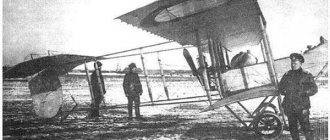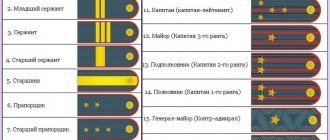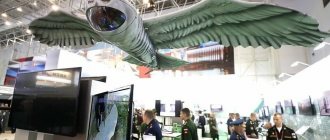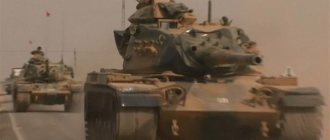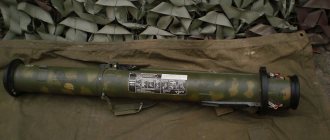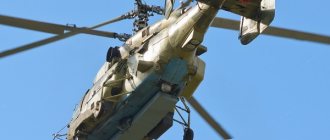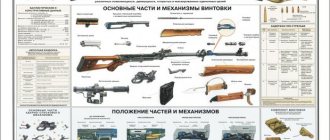The size of the Russian army changes from year to year. This is due to the fact that no more than 20% of the entire age group of recruits are drafted. However, the regular strength of the Russian army is determined by the state defense strategy and the annual presidential decree on conscription.
Channel PROGRAMMER'S DIARY
The life of a programmer and interesting reviews of everything. Subscribe so you don't miss new videos.
Armed forces of the USSR and Russia in the XX-XXI centuries
What is the size of the Russian army? This question can be answered in two ways, each of which depends on what content we put into the term. The size of the Russian army can be understood as both the total number of military personnel of the Armed Forces of the Russian Federation and the number of Ground Forces - a separate, although the most numerous, type of troops.
You may be interested in: Alienation of a land plot is... Definition of the concept, main aspects, conditions and procedure
The size of the country's Armed Forces fluctuated greatly throughout the 20th century. How much? The minimum strength of the Soviet Armed Forces was 562 people in 1925. The USSR army reached its maximum strength during the period of mobilization during the Great Patriotic War, when 11,360,000 people were called up.
During the post-war period, the size of the Armed Forces stabilized at around 3,500,000 people. With such an army, the USSR approached 1991. What is the size of the Russian army today?
After the collapse of the Soviet Union, troops underwent a radical reduction, and in 2022 the total number of military personnel of all branches, together with officers, reached a million people. The number of recruits called up for military service in 2017 amounted to 236 thousand people. During the spring conscription of 2022, 128 thousand men were called up.
National Guard of different varieties
Security forces with this name were created in different historical periods in many countries, but the general definition hides different content. The best known is the US National Guard, which is, on the one hand, a reserve of the armed forces, on the other, a paramilitary force at the disposal of the state governor (essentially a local militia) involved in eliminating the consequences of natural disasters, maintaining law and order during mass unrest, etc. , that is, performing the same functions that in Russia are assigned to the internal troops.
Sometimes the National Guard serves as an additional power support for state power - as a rule, after revolutionary changes (like the Islamic Revolutionary Guard Corps in Iran).
US National Guard quells unrest in Ferguson, December 2014.
Photo: Jim Young/Reuters
This is a long-standing tradition that has left its mark in history books. The National Guard of the Great French Revolution and the Red Guard of 1917 are institutions of self-defense of the new government from not always loyal institutions of the old government and individual potentially hostile sections of the population.
In third world countries, these formations often arise in conditions of relative weakness of the authoritarian central government, as is the case with the national guards of a number of post-Soviet states, and the Republican Guards in Syria and Iraq. This tradition dates back to the personal guards of the monarchs of the ancient period and the Middle Ages, often recruited from foreigners or from a close-knit and loyal national minority. Such structures were difficult to incorporate into the main establishment of the country, and due to this they served at least as a relative insurance against conspiracies and coups.
Types of Ground Forces
The most numerous branch of the military is considered to be motorized rifle. Their material base consists of armored personnel carriers, infantry fighting vehicles and trucks. Motorized rifle troops extremely rarely operate independently, as they are part of motorized rifle formations, which also include tanks, artillery and other units.
The main striking force of the ground forces is tank forces. Their undeniable advantages are their mobility, speed and resistance to nuclear attack.
The main purpose of missile and artillery troops is to deliver fire and nuclear strikes against the enemy. They are armed with both rocket artillery, howitzer, deck and anti-tank artillery. Mortars are also in service.
The ground forces also have their own air defense. Air defense troops are needed to combat enemy air assets, to destroy both combat and reconnaissance aircraft. The main destructive weapons are man-portable, towed and mobile anti-aircraft missile systems, as well as anti-aircraft gun systems.
Air Force
The air force also has several divisions depending on the assigned missions. Thus, long-range aviation strikes behind enemy lines and can even use nuclear weapons for its attacks. The purpose of aviation is the complete destruction of the enemy’s strategic and economic areas.
The main task of a front-line air force operation is to carry out actions in the area of a defensive battle or operation. Troops can attack independently or act as cover for ground or naval forces.
Army aviation serves as reinforcement for motorized rifle divisions, providing reliable rear support and destroying enemy equipment. Also, thanks to air support, ground forces have the ability to quickly change localization.
The normal functioning of the army is ensured by military transport aviation, which transports various cargo - from troops to equipment. In wartime, thanks to military transport aviation, ground forces can be mobile, promptly provided with everything they need.
Radio engineering and anti-aircraft missile forces are expanding the range of aviation capabilities.
Special forces of the Russian army
The number of Russian special forces is relatively small compared to other branches of the Armed Forces. However, their importance for the country's security is difficult to overestimate.
Various special forces units are engaged in ensuring the operation and construction of transport routes, protection from radiation, chemical and bacteriological threats. Signal troops provide communication between various units and facilities of all branches of the military.
In addition, the Armed Forces include formations that do not belong to any of the listed military branches. Such formations include:
- medical intelligence;
- commandant services;
- topographical service;
- formation of technical support.
Special units
The Russian Army 2022 (the number of its troops is indicated above) is distinguished by the presence of special independent units. To perform special types of tasks, certain equipment and personnel with appropriate qualifications are required, which is why in the Russian Federation there are three independent branches of the military.
Airborne troops are famous for their fearlessness, their ability to overcome any obstacles and attack the enemy on his territory.
The Aerospace Defense Forces are the youngest; they were formed relatively recently. The emergence of this type of troops is associated with the rapid exploration of outer space. The main functions of the aerospace defense troops are the defense of Moscow, timely detection of a missile strike and regulation of the operation of spacecraft.
The Strategic Missile Forces represent the main nuclear potential of the Russian army. And although the main purpose of this type of troops is to deter enemy aggression, in an emergency they can also strike back at the enemy’s most important targets.
Railway troops of the Russian Federation
The Russian military logistics service includes railway troops. They were founded in 1851 by order of Nicholas l. In the total composition of the country's Armed Forces, railway troops account for only 28,000 personnel.
Considering the size of the Russian territory and the length of railway tracks in the country, this branch of the military is of fundamental importance. The railway troops are engaged in maintaining the operation of tracks during military operations and emergency situations, restoring destroyed bridges and roads.
Geographical division
At the moment, the Russian Federation is divided into four military districts:
- West. The central command is located in the city of St. Petersburg.
- Oriental. The central command is located in the city of Khabarovsk.
- Central. The headquarters is located in the city of Yekaterinburg.
- Southern. The headquarters is located in the city of Rostov.
In addition, the joint strategic command “North” with headquarters in Severomorsk stands out.
“Crisis militarization”: In Russia, the number of internal troops exceeded the number of the army
The total number of various security forces aimed at combating internal challenges in Russia exceeded the number of the army.
At the same time, President Dmitry Medvedev ordered the formation of a federal personnel reserve for security forces. Even fishermen are being armed: Rosrybolovstvo announced the creation of special forces to fight poachers. Against the backdrop of massive layoffs at factories, cuts in the internal troops were canceled. The country is experiencing a crisis militarization of public administration, experts say. President Dmitry Medvedev ordered the formation of a federal personnel reserve for security forces. The personnel reserve of law enforcement agencies will include representatives of the army, internal troops of the Ministry of Internal Affairs, civil defense troops and the Federal Agency for Special Construction. We are talking about professionals from these departments who have spent too much time in low positions, but when high vacancies appear, they are worthy of replacing them. The formation of the reserve will be handled by the Presidential Personnel Department. It is expected that this will increase the job motivation of security forces, RBC daily reports. In December last year, amid expectations of mass layoffs at Russian factories, the reduction of internal troops was suspended. The total number of employees of various security agencies, not called upon to repel external aggression, already now, according to various estimates, reaches 2.5 million in Russia - this is more than the army. Following the “corporate armies” of Gazprom and Transneft, designed to control the safety of pipelines, the Ministry of Internal Affairs started talking about the army of Olympstroy to protect Sochi construction sites from Sochi residents. The head of Rosrybolovstvo, Andrei Krainy, said yesterday that fish inspectors, the number of which will increase by 50%, will receive firearms and drones, and the department will create an anti-poaching special forces “Piranhas”. Earlier, New Region reported on a large government order received by a plant in the Kurgan region for the production of armored water cannon cars to disperse demonstrations. At the same time, according to Rosstat, the number of unemployed in Russia at the end of January increased to 6.1 million people, which is 8.1% of the country’s working population. And the leader of the Communist Party of the Russian Federation Gennady Zyuganov said the day before that by the fall the number of unemployed will reach 10 million. Many in Russia fear that a further deepening of the crisis will lead to mass discontent. Internal stability in times of crisis is a big question, political scientists say. World practice shows that a 1% increase in unemployment provokes a 5% increase in crime. If there are not enough internal troops, fish special forces and even security guards from private security companies will come to the court. “Federal officials have the illusion that they can protect themselves from the consequences of the crisis by force,” the publication quotes the opinion of Gennady Gudkov, a member of the Duma Security Committee. “This is a utopia. There are many examples in history when the militarization of the state only increased the danger of armed clashes.” New Region, Alexey Usov
Read the documents
One guiding document, within the framework of which the existence of the National Guard looks quite organic, is well known. This is Russia's new military doctrine, approved at the end of 2014.
The document for the first time introduced into circulation a whole range of new threats to the state related to internal factors and external interference designed to destabilize the situation.
It is obvious that with a serious restructuring of the threat field, specific steps are required to create a system that will stop these threats at least nominally. The threat field of the 2014 doctrine clearly outlined the front of an internal “war without war,” for which the state simply did not have any tools other than a well-functioning, but still limited in applicability, counter-terrorism operations (CTO) regime.
In the form in which President Putin announced the creation of a separate “internal army,” this task can be traced quite consistently. The terrorist threat is clearly defined and can be interpreted very broadly, for example, in the spirit of the now fashionable concept of “hybrid war,” in which the main role is played by mobile paramilitary forces that systematically destabilize a large state from the inside.
The threat of destabilization and civil unrest in this case is perceived as a result of the influence of malicious forces and as a side effect of a partial loss of control in the conditions of natural disasters and man-made disasters. According to the president’s remark, they also plan to involve the National Guard in eliminating their consequences.
US National Guard in New York after Hurricane Sandy, November 2012.
Photo: John Minchillo/AP
In this, our National Guard is completely united with its American “namesake,” which works both in disaster zones and in areas of major civil unrest.
The question remains open about the new functions of the newly created power structure - in particular, about its possible acquisition of the status of a subject of operational investigative activities, which could quite plausibly be motivated by counter-terrorism tasks and the fight against extremism. In this case, in fact, not only a new power structure will appear in Russia, but also a new full-fledged intelligence service.


